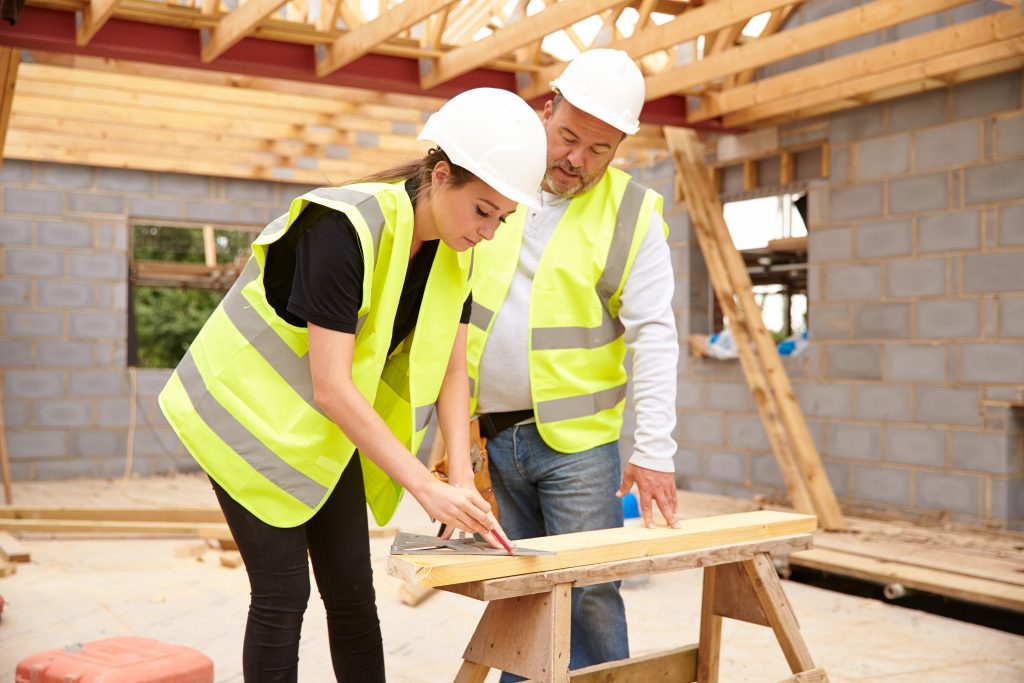Construction industry steps up efforts to attract and retain female talent

Businesses of all sizes are actively addressing gender imbalance
– Gender parity is in sight within some organisations
– Recognising & addressing male dominated cultures is paying off
– The industry is alert to further opportunities to drive progress including: Closing the gender pay gap; adopting zero tolerance on discrimination; promoting mentoring; improving welfare facilities and celebrating success.
Construction has long been one of the most male-dominated industries in the UK but sustained efforts from across the sector are redressing the balance, says supply chain risk management expert, CHAS
The construction industry’s gender imbalance is well-publicised. An Office for National Statistics survey (1) from 2018 estimated that women only make up 12% of the UK construction workforce and just 1% of workers onsite.
While these figures are undoubtably bleak, the good news is there is a collective will to tackle the issue and progress is clear.
A recent CHAS survey discovered that companies of all sizes are reviewing what more they can do to tackle the gender imbalance, with 15 per cent of respondees confirming they now have dedicated programs in place to employ more women. Many larger companies have also stated ambitious targets for female recruitment which they are on their way to achieving. Morgan Sindall, for example, has more than doubled its female workforce representation to over 20 per cent in the last two years while 38 per cent of Willmott Dixon’s 2017 management trainee intake were said to be women. Elsewhere almost a third of Crossrail jobs are filled by women and Thames Tideway CEO Andy Mitchell has set the ambition of achieving gender parity by 2023.
Further encouragement comes from the construction industry careers specialist Go Construct (2), which suggests the percentage of the workforce in this sector that is now female has risen to around 14% and some 37% of new entrants into the construction sector coming from higher education are women.
There is also a swell of organisations and initiatives focused on attracting and keeping more women in construction; Women into Construction; NAWIC; WISE; the Young Women’s Trust, Chicks with Bricks and Women on The Tools to name a few.
Digging deeper
While this progress is positive, sustained effort is necessary and in February 2020 CHAS surveyed its membership to find out more about their successes in this area and the challenges and opportunities that lie ahead. CHAS’s membership covers the full spectrum of construction companies from micro contractors to industry leaders so the responses provide a broad insight into the current landscape.
Closing the gender pay gap
The Office of National Statistics (3) shows on average women in construction are paid less than their male counterparts so it was no surprise that 73% of respondees to the survey said they felt addressing this issue is the most important factor in attracting and retaining female talent. When it comes to whether or not organisations monitor the gender pay gap, 43 per cent of respondees said they did, 35 per cent didn’t and 22 per cent weren’t sure. Reporting for gender pay became mandatory for companies with over 250 employees in 2017 which has put this issue under the spotlight and will hopefully drive progress. A formal review of gender pay reporting requirements due in 2022 when it is possible that it will be made mandatory for firms of all sizes.
A question of culture
Having an inclusive culture was highlighted as the second most important factor in terms of attracting and retaining female talent. Several companies shared that recognising and addressing a male dominated culture within their organisations had brought about positive change. However it was also an area where respondees said more attention was needed and it was suggested challenging poor attitudes, taking a zero tolerance approach to discrimination and promoting a more professional culture could help.
Cleaning up its act
Improving welfare facilities was identified as the third most important area which could have a significant impact – in particular the provision of clean toilets with locks on the doors. In 2019 the trade union Unite launched its construction period dignity campaign calling on construction sites to commit to measures including: clean lockable female toilets; hand washing facilities; sanitary products and sanitary disposal units and the CHAS survey suggested this is an area where many sites are still lacking. Some respondees said specifying female specific workwear and Personal Protective Equipment that takes into account pregnancy and cultural modesty is also an area that needs more attention.
Attention was also drawn to the need for the industry to communicate that construction isn’t just dirty work: “Educate women about safe methods of work for lifting and handling and modern machinery so they understand they may be able to cope better physically than they think,” was one suggestion, while others said promoting the fact that there are a wide range of roles available could be beneficial. On this note raising awareness of the impact of digitisation which has the potential to transform the industry and its employment opportunities was also seen as important.
Celebrating success
Respondees said highlighting female role models, offering better career progression and celebrating success were also helping to attract and retain female talent and efforts in these areas should be amplified. “Let’s see female construction workers on billboards and more female construction workers in television and film,” said one respondee. Many of the companies surveyed were involved in initiatives going into schools and colleges to educate young women about the opportunities in construction and one respondee suggested having more female college teachers would be beneficial. The value of back to work initiatives for women who have been out of work for a long time was also highlighted.
According to the survey, once women are in work, mentoring schemes are a popular way to ensure organisations retain female workers and help them reach their potential and many companies said they were enjoying success with such schemes. Likewise flexible working is becoming more commonplace and this was emphasised as the key issue which will help to retain female workers long term.
Conclusion
The issues preventing the employment of women in construction are complex but they can be overcome and the rewards are great. The World Economic Forum (4) says because women bring new skills to the workplace, the productivity and growth gains from adding women to the work force are larger than previously thought. Findings of McKinsey & Company’s Delivering through Diversity report (5) whichshow gender diverse teams are 21 per cent more likely to have above average profitability echo this. Let’s also not forget the huge benefits of employing more women in terms of tackling the industry’s gaping skills gap.

Ian McKinnon, CHAS MD comments:
“The construction industry knows it has a gender gap but the conversation has moved on from ‘we need to take action’ to ‘how effective is the action we are taking and how we can accelerate change?’
“The results of our survey were encouraging – the construction industry is clearly taking significant steps to encourage more women into the industry and they are starting to pay off.
“There’s lots more work to be done and progress will continue to depend on a collaborative approach but it’s important to take stock of progress and share best practice.”

